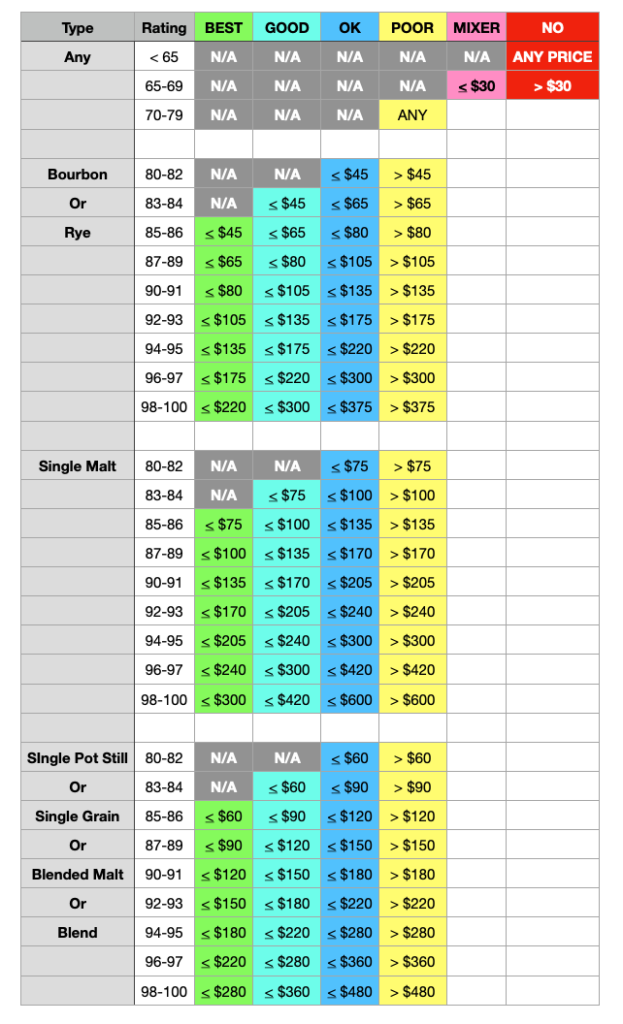Visit Whisk(e)y Points to see my whisk(e)y ratings. My ratings consist of a quantitative rating, the “Points,” and a qualitative assessment, the “Value,” which takes into consideration both the Points and the cost.
At the top of any page, the Navigation Bar enables you to select Ratings by Category of whisk(e)y. I’ve also provided a Search box. On a mobile device, click on the Menu Icon on the top right for Navigaton.
Scoring Whisk(e)y
Points = Nose + Palate + Finish + Balance. Maximum Points = 100.
My whisk(e)y score (i.e. the Points) is comprised of a sum of the individual component scores for the Nose, Palate, Finish and Balance. Each component can receive from 1 to 25 points; so, the maximum point value for a whisk(e)y is 100.
I typically start with 20 as a baseline for a component score, and go up or down from there, depending upon my assessment. An average whisk(e)y would have a score of 80.
My goal is to provide simple, concise information, rather than long reviews… I want to get to the point.
At the Whisk(e)y Points home page, I’ll occasionally post thoughts or information that I think may be helpful.
Ratings Lists
- By default, the most recently posted rating is at the top of the list.
- Click on any column heading to sort by that heading (ie. Points, Name, Value, Price). It will sort from lowest to highest. Click again, and it sorts from highest to lowest.
- Price
- Price listed is for a standard bottle size: 700 ml or 750 ml. If the standard bottle size is different (i.e. 500ml, 375ml, 1L), then the price I show is scaled to 750 ml, for comparison/value calculations.
- Price is based upon the commercial price I was able to find at the time of the rating. If I update the price at a later date, I note that in the detailed rating.
- Click on a Whisk(e)y, and you will see a more detailed Rating, which includes
- Tasting notes (sometimes)
- Photograph (if I remembered to take one)
- Tags… Click on a tag to see a ratings list of other whisk(e)y with the same tag
How do I determine Value?
I look at Total Points, Type (i.e. Bourbon, Single Malt, etc) and Price.
I display Value for each whisk(e)y at the end of the detailed rating.
I compute it, based upon my own assumptions of what constitutes value.
I apply the formula consistently across all whisk(e)y, but it is HIGHLY SUBJECTIVE. So, take it with a few grains of salt (or a few drams of whisk(e)y).
BEST: A Best Buy… It’s a great value at the price I show.
GOOD: Although not a Best Buy, it’s still a good value.
OK: It’s a reasonable whisk(e)y for that price; and you’re not wasting your money.
POOR: It’s not worth the money. However, some fantastic whiskies have POOR value. i.e. a $1000 bottle of Scotch is never an OK value, but it could be a truly phenomenal whisky. And, if you just won the lottery, you may want it in your collection.
MIXER: It’s not good enough to drink neat. But, since the price is low, it’s OK to use mixing in cocktails.
NO: Don’t waste your money on it.
Here is the algorithm I use for determining value:

Cheers! / Slainte! / Kanpai!